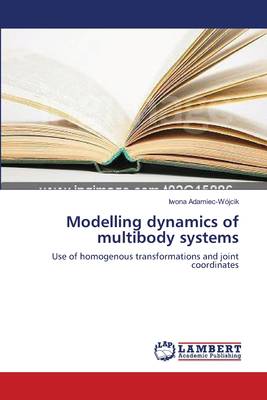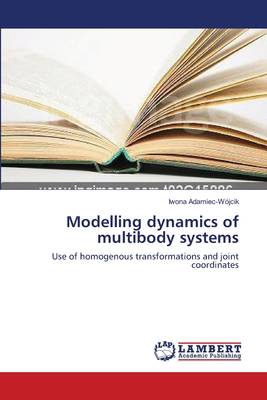
- Afhalen na 1 uur in een winkel met voorraad
- Gratis thuislevering in België vanaf € 30
- Ruim aanbod met 7 miljoen producten
- Afhalen na 1 uur in een winkel met voorraad
- Gratis thuislevering in België vanaf € 30
- Ruim aanbod met 7 miljoen producten
Zoeken
Modelling dynamics of multibody systems
Use of homogenous transformations and joint coordinates
Iwona Adamiec-Wójcik
Paperback | Engels
€ 87,45
+ 174 punten
Omschrijving
Research in multibody systems has been growing rapidly in parallel with developments in computer sophistication since this has enabled complex real systems to be analysed more easily and quickly. One of the most difficult problems in modelling multibody systems is flexibility, which requires more simplifying assumptions than other phenomena. This monograph explains how homogenous transformations can be used to model kinematic chains with both rigid and flexible links. Flexible links are modelled using three approaches: both the classical and modified rigid finite element method as well as the modal method. Each of these methods is formulated in such a way that it is possible to generate the equations of motion for any system of rigid and flexible links in a uniform and general manner based on the algorithm derived for rigid multibody systems. The methods presented are used to model manipulators with flexible links and articulated vehicles. The monograph is aimed at postgraduate students and researchers.
Specificaties
Betrokkenen
- Auteur(s):
- Uitgeverij:
Inhoud
- Aantal bladzijden:
- 132
- Taal:
- Engels
Eigenschappen
- Productcode (EAN):
- 9783838310404
- Verschijningsdatum:
- 31/05/2010
- Uitvoering:
- Paperback
- Afmetingen:
- 150 mm x 220 mm
- Gewicht:
- 192 g

Alleen bij Standaard Boekhandel
+ 174 punten op je klantenkaart van Standaard Boekhandel
Beoordelingen
We publiceren alleen reviews die voldoen aan de voorwaarden voor reviews. Bekijk onze voorwaarden voor reviews.








